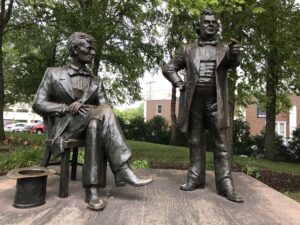 Less than a week after their first debate in Ottawa, Abraham Lincoln and Stephen A. Douglas ventured into Freeport, Illinois, for the second of their seven joint debates during the senate election of 1858. By all standards, Freeport turned out to be the most consequential. From it came the Freeport Doctrine.
Less than a week after their first debate in Ottawa, Abraham Lincoln and Stephen A. Douglas ventured into Freeport, Illinois, for the second of their seven joint debates during the senate election of 1858. By all standards, Freeport turned out to be the most consequential. From it came the Freeport Doctrine.
Freeport sits in the northern part of Illinois, which meant that it was generally settled by northern state migrants and tended to be more antislavery. Lincoln was on safer ground here. The joint debate agreement stipulated that the two candidates would alternate who spoke for the first hour, after which the other candidate had ninety minutes to speak, followed by a thirty-minute wrap up by the first speaker. Since Douglas started in Ottawa, Lincoln got to speak first in Freeport.
He started by answering the seven interrogatories (aka, questions) posed by Douglas in Ottawa. There was some danger to doing so as Douglas had tried to peg Lincoln as a “Black Republican,” that is, a radical leftist and abolitionist who wanted not only the end of slavery but the complete equality in all respects for African Americans. Lincoln as actually a moderate on those points, noting that the U.S. Constitution effectively barred the federal government from abolishing slavery in the states where it already existed. Indeed, all of the northern states that had banned slavery had done so at the state level, and Lincoln and others understood that the same would have to happen for any remaining slave states. In addition, the Fugitive Slave Law of 1850, while it failed to acknowledge the immorality of slavery, was unfortunately the law of the land. Being an honest man, notwithstanding the danger even in a generally favorable part of Illinois, Lincoln reiterated and responded to Douglas questions:
Question 1. “I desire to know whether Lincoln to-day stands, as he did in 1854, in favor of the unconditional repeal of the Fugitive Slave law?”
Answer. I do not now, nor ever did, stand in favor of the unconditional repeal of the Fugitive Slave law. [Cries of “Good,” “Good.”]
Q. 2. “I desire him to answer whether he stands pledged to-day, as he did in 1854, against the admission of any more slave States into the Union, even if the people want them?”
A. I do not now, or ever did, stand pledged against the admission of any more slave States into the Union.
Q. 3. “1 want to know whether he stands pledged against the admission of a new State into the Union with such a Constitution as the people of that State may see fit to make?”
A. I do not stand pledged against the admission of a new State into the Union, with such a Constitution as the people of that State may see fit to make. [Cries of “good,” “good.”]
Q. 4. “I want to know whether he stands to-day pledged to the abolition of slavery in the District of Columbia?”
A. I do not stand to-day pledged to the abolition of slavery in the District of Columbia.
Q. 5. “I desire him to answer whether he stands pledged to the prohibition of the slave-trade between the different States?”
A. I do not stand pledged to the prohibition of the slave-trade between the different States.
Q. 6. “I desire to know whether he stands pledged to prohibit slavery in all the Territories of the United States, North as well as South of the Missouri Compromise line?”
A. I am impliedly, if not expressly, pledged to a belief in the right and duty of Congress to prohibit slavery in all the United States Territories.
Q. 7. “I desire him to answer whether he is opposed to the acquisition of any new territory unless slavery is first prohibited therein?”
A. I am not generally opposed to honest acquisition of territory; and, in any given case, I would or would not oppose such acquisition, accordingly as I might think such acquisition would or would not agravate [sic] the slavery question among ourselves. [Cries of good, good.]
After showing he was responsive to Douglas’s questions, Lincoln posed four of his own. He asked:
Question 1. If the people of Kansas shall, by means entirely unobjectionable in all other respects, adopt a State Constitution, and ask admission into the Union under it, before they have the requisite number of inhabitants according to the English bill-some ninety-three thousand-will you vote to admit them? [Applause.]
Q. 2. Can the people of a United States Territory, in any lawful way, against the wish of any citizen of the United States, exclude slavery from its limits prior to the formation of a State Constitution? [Renewed applause.]
Q. 3. If the Supreme Court of the United States shall decide that States cannot exclude slavery from their limits, are you in favor of acquiescing in, adopting and following such decision as a rule of political action? [Loud applause.]
Q. 4. Are you in favor of acquiring additional territory, in disregard of how such acquisition may affect the nation on the slavery question? [Cries of “good,” “good.”]
Feeling pressured to respond truthfully as Lincoln had done, Douglas’s answer to the second question would come back to haunt him.
Can the people of a United States Territory, in any lawful way, against the wish of any citizen of the United States, exclude slavery from its limits prior to the formation of a State Constitution?
The question directly positioned Douglas’s Popular Sovereignty (from his Kansas-Nebraska Act of 1854) against the Supreme Court’s Dred Scott decision (of 1857). Douglas was forced to choose between alienating those people he required to get reelected to the Illinois Senate or the Southerners he needed in his third run for the presidency two years later. After some obfuscation, Douglas finally responded that people in a territory could keep out slavery despite the Dred Scott decision, which stated that federal and state governments had no authority to exclude slavery because it would deprive slaveholders of their “property” rights without due process.
Southerners, who wanted the ability to expand slavery without limit, had grown concerned that states could choose to exclude slavery in accordance with Douglas’s Popular Sovereignty. They saw the Dred Scott decision as confirming their right to bring slaves wherever they wanted, and now Douglas was saying that was not true, that states could somehow choose not to allow slavery intrusion. This presented a long-term problem for slave-owning states. While they knew that most of the new territories were grossly inadequate for growing cotton, which was still the primary driver of the need for enslaving millions of their fellow Americans based solely on the color of their skin, they recognized that every new slave state would increase their representation in Congress—and their continued power to dictate policy.
Lincoln and Douglas would debate five more times during the campaign. When the votes were counted, Lincoln’s Republican party had won the popular vote and picked up seats in the legislature. But the state legislature, which due to gerrymandering would remain majority Democratic despite the vote totals, was still choosing Senators. Douglas retained his Senate seat. Lincoln likely realized his chances of winning the seat were close to nil because of the legislature’s makeup. When he was asked why he would give Douglas an advantage for Senate reelection, Lincoln replied that he had a longer view in mind: Douglas might win the Senate, but he would lose the presidency. The Freeport Doctrine would see to that.
It would be almost three weeks before the next debate in Jonesboro deep into the southern part of the state and with a significantly different view on slavery than Freeport.
[Photo of Lincoln-Douglas statues in Freeport, IL by David J. Kent.]

Lincoln: The Fire of Genius: How Abraham Lincoln’s Commitment to Science and Technology Helped Modernize America is available at booksellers nationwide.
Limited signed copies are available via this website. The book also listed on Goodreads, the database where I keep track of my reading. Click on the “Want to Read” button to put it on your reading list. Please leave a review on Goodreads and Amazon if you like the book.
You also follow my author page on Facebook.
David J. Kent is Immediate Past President of the Lincoln Group of DC and the author of Lincoln: The Fire of Genius: How Abraham Lincoln’s Commitment to Science and Technology Helped Modernize America and Lincoln: The Man Who Saved America.
His previous books include Tesla: The Wizard of Electricity andEdison: The Inventor of the Modern World and two specialty e-books: Nikola Tesla: Renewable Energy Ahead of Its Time and Abraham Lincoln and Nikola Tesla: Connected by Fate.




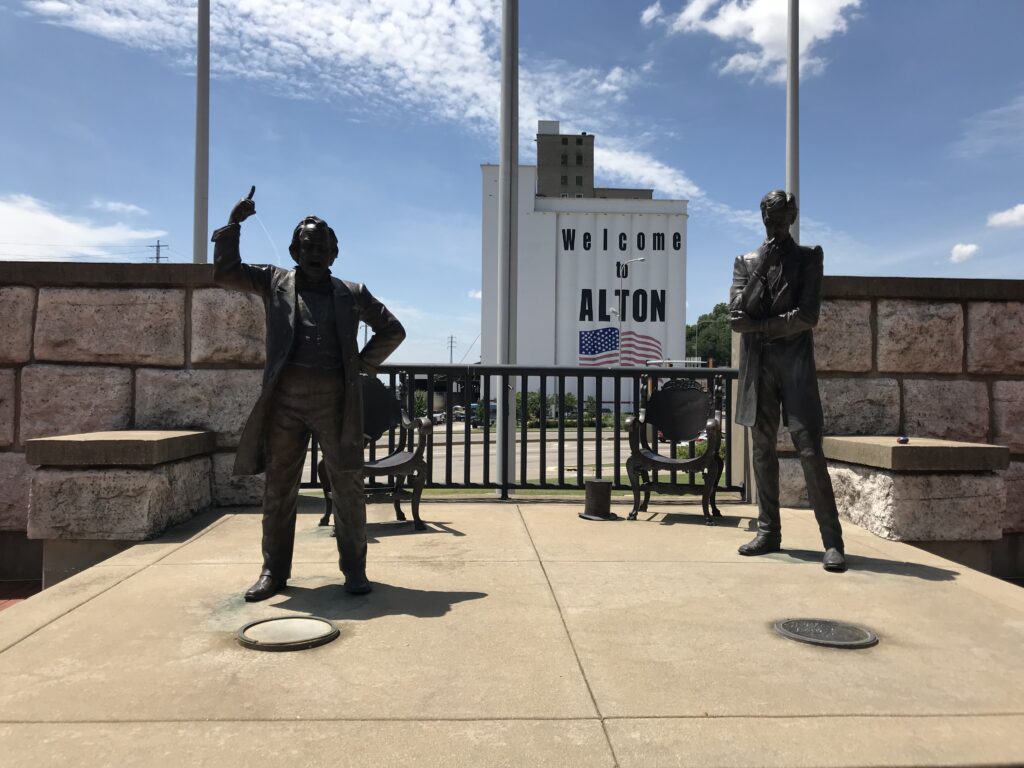
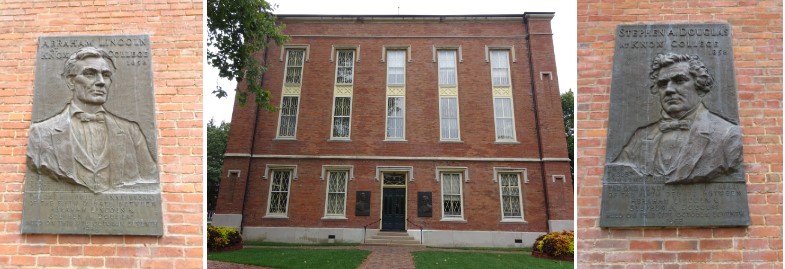 With the
With the 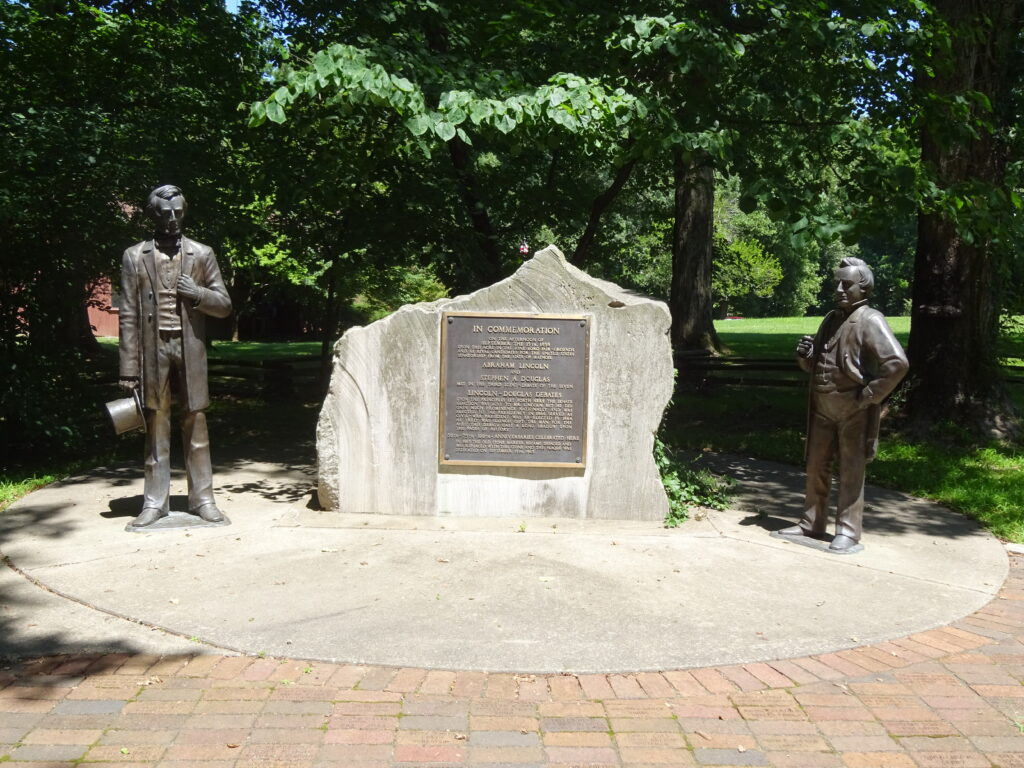
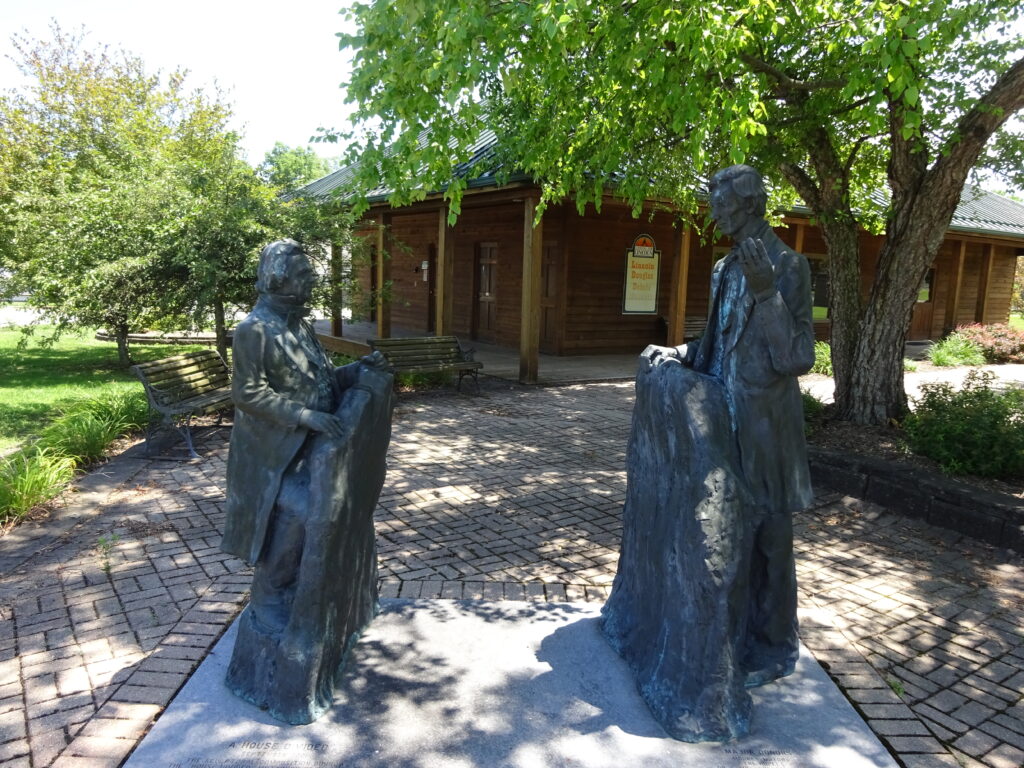
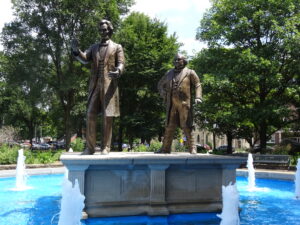 Abraham Lincoln and Stephen A. Douglas engaged in perhaps the most important series of debates on American history,
Abraham Lincoln and Stephen A. Douglas engaged in perhaps the most important series of debates on American history, 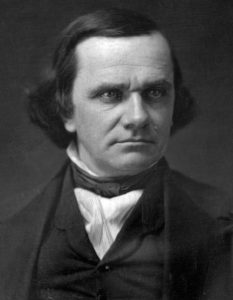 At 9:10 am on Monday, June 3, 1861, Stephen A. Douglas died in Chicago at the age of forty-eight. Thus ended a remarkable life, both as a leader in the antebellum Democratic party and as a foil to Abraham Lincoln’s rise. Douglas had fallen ill weeks before while headed back to Illinois to lobby for Democratic support of the newly elected President Lincoln once the Civil War started. Lincoln immediately directs that government offices be close on the day of the funeral and that the Executive Mansion (aka, the White House) and departments be draped on mourning for thirty days. On June 4th, Secretary of War Simon Cameron issues a circular to Union armies, announcing “the death of a great statesman…a man who nobly discarded party for this country.”
At 9:10 am on Monday, June 3, 1861, Stephen A. Douglas died in Chicago at the age of forty-eight. Thus ended a remarkable life, both as a leader in the antebellum Democratic party and as a foil to Abraham Lincoln’s rise. Douglas had fallen ill weeks before while headed back to Illinois to lobby for Democratic support of the newly elected President Lincoln once the Civil War started. Lincoln immediately directs that government offices be close on the day of the funeral and that the Executive Mansion (aka, the White House) and departments be draped on mourning for thirty days. On June 4th, Secretary of War Simon Cameron issues a circular to Union armies, announcing “the death of a great statesman…a man who nobly discarded party for this country.”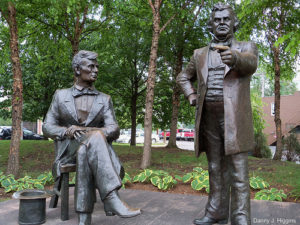 In 1858, Abraham Lincoln began following Douglas from town to town as they campaigned against each other for Douglas’s Senate seat. Challenging the incumbent Senator in a Democratic-dominated state, Lincoln had to coax Douglas to go against his own interests and formally debate. Whenever Douglas gave a major speech, Lincoln told the crowd he would respond that evening or the next day. After doing this for a while, and with the help of his influential friend Jesse Fell, Lincoln approached Douglas about holding a series of joint debates across the state. Reluctant at first, Douglas eventually agreed to one debate in each of the nine congressional districts in Illinois. They had both already spoken in Springfield and Chicago within a day of each other, so they agreed to seven additional joint debates in Ottawa, Freeport, Jonesboro, Charleston, Galesburg, Quincy, and Alton over the next two months. For each debate one candidate would speak for sixty minutes, followed by the other for ninety minutes, and the first would get a thirty-minute reply. They alternated who would speak first, with the incumbent Douglas getting the benefit of doing so in four of the seven debates.
In 1858, Abraham Lincoln began following Douglas from town to town as they campaigned against each other for Douglas’s Senate seat. Challenging the incumbent Senator in a Democratic-dominated state, Lincoln had to coax Douglas to go against his own interests and formally debate. Whenever Douglas gave a major speech, Lincoln told the crowd he would respond that evening or the next day. After doing this for a while, and with the help of his influential friend Jesse Fell, Lincoln approached Douglas about holding a series of joint debates across the state. Reluctant at first, Douglas eventually agreed to one debate in each of the nine congressional districts in Illinois. They had both already spoken in Springfield and Chicago within a day of each other, so they agreed to seven additional joint debates in Ottawa, Freeport, Jonesboro, Charleston, Galesburg, Quincy, and Alton over the next two months. For each debate one candidate would speak for sixty minutes, followed by the other for ninety minutes, and the first would get a thirty-minute reply. They alternated who would speak first, with the incumbent Douglas getting the benefit of doing so in four of the seven debates. In June I’ll have the privilege of participating in the annual
In June I’ll have the privilege of participating in the annual 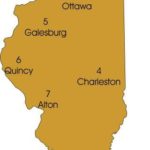 Now that I’ve recovered (not) from my recent overseas trip, I’m off on the second part of my Chasing Abraham Lincoln road trip. This part takes me into Illinois, the Land of Lincoln. For stories and photos from Part 1, click on
Now that I’ve recovered (not) from my recent overseas trip, I’m off on the second part of my Chasing Abraham Lincoln road trip. This part takes me into Illinois, the Land of Lincoln. For stories and photos from Part 1, click on 






